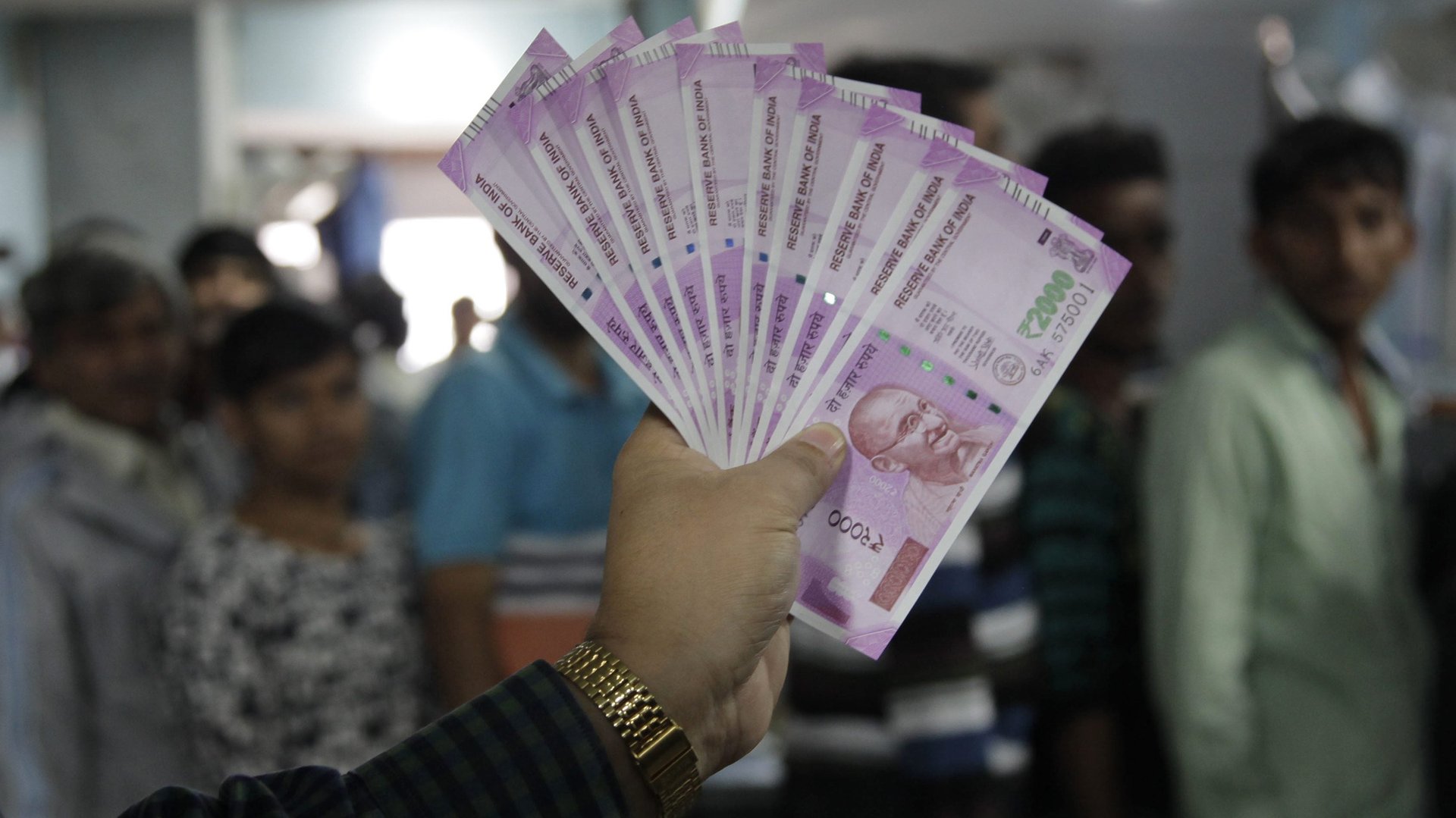Demonetisation burnt a $5.5 billion hole in the Modi government’s pocket
Hardly anyone managed to come out unscathed from the disruptive note-ban exercise carried out by prime minister Narendra Modi in 2016—not even the government.


Hardly anyone managed to come out unscathed from the disruptive note-ban exercise carried out by prime minister Narendra Modi in 2016—not even the government.
The high cost of printing new currency notes drained the central bank’s coffers, which in turn resulted in lower dividend income for the government. In financial year 2017 (April 2016-March 2017), the Reserve Bank of India (RBI) transferred only Rs30,659 crore ($4.77 billion) compared to Rs65,876 crore the year before, P Radhakrishnan, India’s minister of state for finance, told the Lok Sabha on Dec. 15. That’s a drop of Rs35,217 crore ($5.49 billion).
In a written reply to questions, Radhakrishnan accepted that the RBI’s income had declined mainly due to the high cost incurred in printing new notes following demonetisation. Radhakrishnan added that till Dec. 08, 2017, about Rs5,000 crore had been spent on printing the new Rs500 notes, and Rs1,293.6 crore and Rs522.83 crore on the Rs2,000 and Rs200 notes, respectively.
Besides, a decrease in net interest income, decrease in income from foreign sources on account of appreciation of the rupee, and the transfers of funds by the RBI to its contingency fund also dragged the central bank’s income down.
On Nov. 08, 2016, in a surprise move, the government of India rendered two high-value currency notes illegal. As a result, Rs500 and Rs1,000 notes were withdrawn from the system leading to an acute cash crunch in the economy. In order to correct this deficit the RBI had to print new currency notes of Rs500 and Rs2,000 that came at an increased cost. In financial year 2016-17, the total cost of printing new currency notes doubled to Rs7,965 crore, compared to Rs3,420 crore in 2015-16, the central bank stated in its annual report released in August.
Expense apart, demonetisation also took the wind out of India’s economy. It managed to take a toll on the employment scenario in India. Yet, the government believes it was worth it. Several economists argue that the merits of demonetisation will be visible in the long run in the form of reduced cash transactions and widening of the tax-payer base.
In reply to another query in the Lok Sabha, the government revealed that the income tax department had managed to crack the whip on black money holders and has uncovered hidden income of Rs7,961 crore in the period after demonetisation (November 2016 to March 2017). Assets worth Rs900 crore have also been seized even as detection and seizure of counterfeit notes increased.